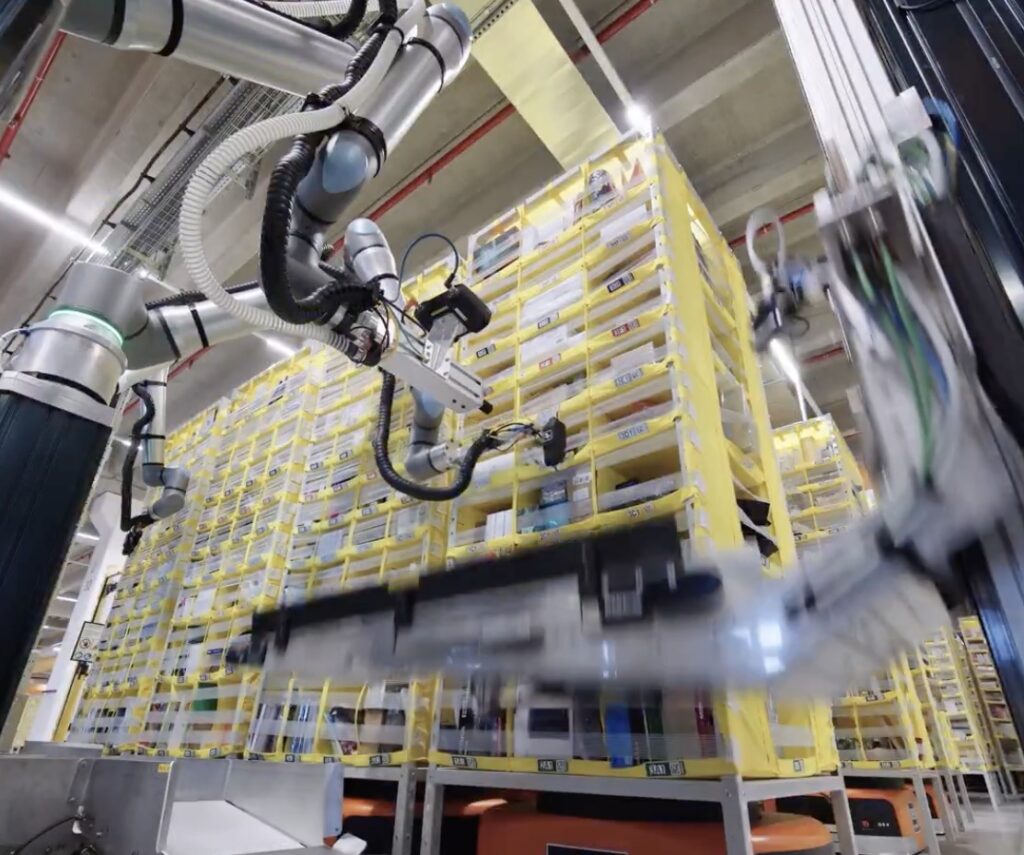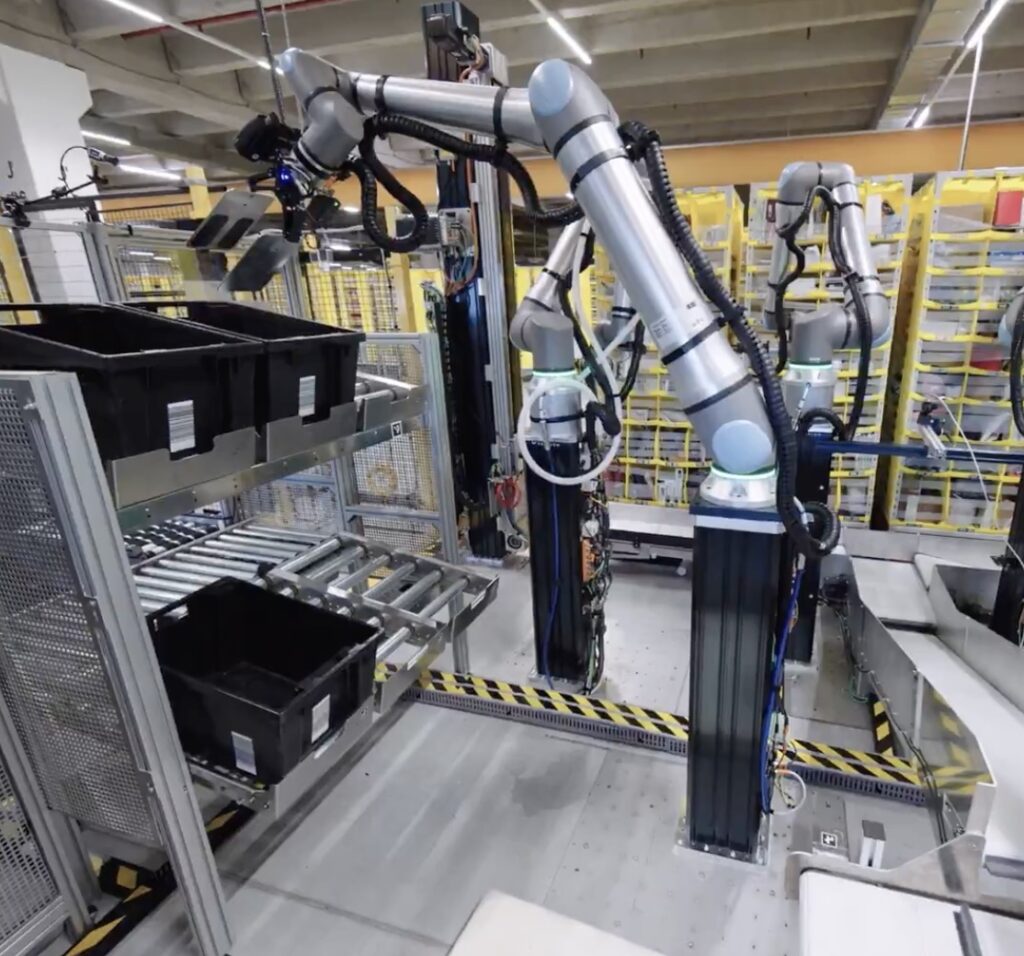How Vulcan Robots and Retraining Programs Hint at a New Workforce Dynamic
- Amazon’s introduction of the Vulcan robot showcases a future where AI and robots handle repetitive, ergonomically challenging tasks, while humans transition to new roles like robotics maintenance.
- The tech industry is divided on AI’s impact on jobs, with some predicting mass displacement and others foreseeing the creation of novel roles, as supported by historical trends and World Economic Forum projections.
- While Amazon offers a glimpse of hope through retraining programs, the broader implications for unskilled workers remain uncertain, with questions lingering about the scalability and accessibility of such opportunities.
The rapid integration of artificial intelligence and robotics into the workplace has sparked intense debate about the future of human labor. On one side, pessimists like some venture capitalists—Marc Andreessen notably excluded—envision a world where bots replace nearly all jobs, leaving humans sidelined. On the other, optimists argue that technology will take over the mundane and physically taxing tasks, freeing humans to engage in innovative, newly created roles. Historical evidence leans toward the latter, with the World Economic Forum estimating that while 92 million jobs may be displaced by current technological trends, a staggering 170 million new positions could emerge in their place. Amid this uncertainty, Amazon has stepped forward with a tangible example of how this balance might look, unveiling its Vulcan robot and offering a peek into what the future holds for workers, particularly those in unskilled labor roles like warehouse operatives.
Amazon’s announcement on Wednesday introduced Vulcan, a robot designed to “feel” and handle ergonomically challenging tasks in warehouses, such as retrieving items from the highest and lowest shelves. This innovation aims to reduce physical strain on human workers, who no longer need to climb ladders or bend repeatedly. Instead, humans will focus on items stored at mid-level heights or those that Vulcan’s advanced sensory capabilities still can’t manage. As CEO Andy Jassy noted on X, Vulcan not only enhances safety but also opens doors for employees to upskill in areas like robotics maintenance. This dual approach—robots as collaborators and humans as evolving contributors—paints a picture of coexistence rather than outright replacement, at least for now.

Delving deeper into Amazon’s strategy, the company’s blog post highlights a significant shift: robots already play a role in completing 75% of customer orders, and this has spurred the creation of entirely new job categories. Roles such as robotic floor monitors and onsite reliability maintenance engineers are emerging, supported by Amazon’s retraining programs designed to transition warehouse workers into these technical positions. However, the reality is not as rosy as a one-to-one job conversion. Not every warehouse worker will have the aptitude or interest to become a robot technician, and the sheer number of humans needed to oversee automated systems will likely be far smaller than those currently fulfilling orders manually. Still, Amazon’s inclusion of retraining initiatives alongside the Vulcan rollout signals a recognition of the need to address the human element in an AI-driven future—a rare and meaningful gesture in an industry often criticized for prioritizing efficiency over empathy.
For the broader workforce, especially those without the resources or inclination to pursue advanced degrees in AI or machine learning, Amazon’s model raises both hope and concern. What does a bot-filled future look like for the millions of working-class individuals in roles like grocery clerks, fast-food cooks, or delivery drivers? One possibility is a world where humans shift to supervisory positions—think “automation monitors” akin to the lone clerk overseeing a row of self-checkout machines today. Operating robots could become a baseline skill, much like using a personal computer is now essential for employability across industries. Amazon’s retraining efforts suggest a pathway, however narrow, for workers to adapt to this new reality, potentially setting a precedent for other companies to follow.
Yet, the dream of a fully automated future may remain just that—a dream, at least for the foreseeable future. Not every company has the deep pockets of Amazon to invest in cutting-edge robotics, which might limit widespread adoption to giants in sectors like automotive manufacturing or e-commerce. Most retail stores, restaurants, and transportation roles could continue to rely on human labor for decades, especially given the lukewarm reception to automation technologies like Amazon’s Just Walk Out system. Initially touted as revolutionary for retail and grocery, the tech faced resistance from an industry wary of partnering with its biggest competitor. Moreover, revelations that the system depended on human workers in India to manually label videos undermined its “fully automated” promise, and even Amazon scaled back its deployment. Today, such technology remains scarce in everyday settings, a reminder that the bot revolution may progress more slowly and unevenly than tech evangelists predict.

Amazon’s Vulcan robot and retraining initiatives offer a compelling, if incomplete, vision of how humans might fit into an AI-powered world. They suggest a future where technology alleviates the burden of repetitive tasks, while humans are nudged toward more technical, oversight-based roles. However, the scalability of this model remains uncertain. Will other industries adopt similar retraining programs, or will the majority of workers be left grappling with displacement? And can enough new roles truly be created to offset the jobs lost to automation, as the World Economic Forum hopes? For now, Amazon’s steps provide a glimmer of optimism, a hint that the tech industry might finally be considering the human cost of progress. But for the warehouse worker, the grocery clerk, and the countless others watching this transformation unfold, the question remains: will this future have a place for everyone, or only for those who can adapt fastest?
